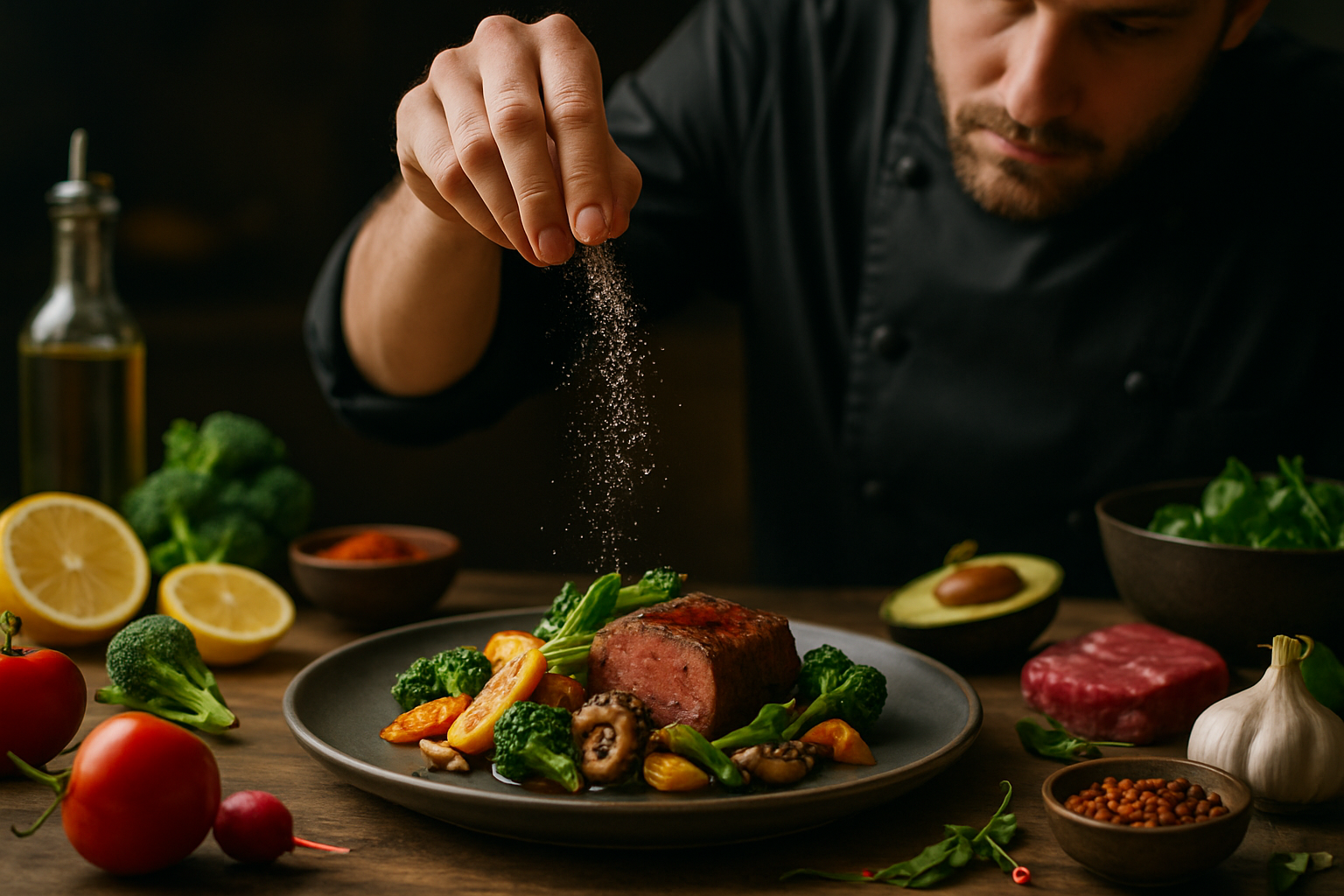Culinary Alchemy: Transforming Everyday Ingredients
Elevate your cooking game with the art of culinary alchemy. Discover innovative techniques to transform humble ingredients into extraordinary dishes that will wow your taste buds and impress your guests. From molecular gastronomy to ancient preservation methods, this journey through culinary magic will inspire you to see your pantry in a whole new light.

Unexpected Ingredient Pairings
One of the most exciting aspects of culinary alchemy is the discovery of unexpected ingredient pairings that create harmonious and complex flavors. Chefs and food scientists have found that certain compounds in different foods share similar flavor profiles, leading to surprising combinations. For example, strawberries and basil share a compound called linalool, which explains why they complement each other so well. Similarly, chocolate and blue cheese both contain methyl ketones, making them an unexpectedly delicious pairing. By understanding these flavor affinities, home cooks can experiment with bold combinations like watermelon and feta, or olive oil and ice cream. These pairings not only create interesting taste experiences but also challenge our preconceived notions about which foods “should” go together.
Transformative Cooking Techniques
Innovative cooking techniques can dramatically alter the taste, texture, and appearance of ingredients. Sous vide cooking, for instance, uses precise temperature control to transform tough cuts of meat into tender, flavorful dishes. Smoking, traditionally used for preservation, can infuse foods with complex flavors and create new dimensions in familiar ingredients. Even simple techniques like pickling can transform vegetables, extending their shelf life while creating tangy, crunchy delights. More advanced methods like nitrogen freezing allow for the creation of unique textures, such as shattering herbs or creating powders from liquids. By mastering these techniques, home cooks can expand their culinary repertoire and breathe new life into everyday ingredients.
The Art of Culinary Illusion
Culinary alchemy often involves creating dishes that deceive the eye but delight the palate. This art of culinary illusion challenges diners’ expectations and creates memorable dining experiences. For example, a chef might create a “faux caviar” using flavored liquids and spherification techniques, or craft a dessert that looks like a savory dish. Edible cocktails, where drinks are transformed into solid forms, blur the line between food and beverage. Another popular technique is creating vegetable-based meat alternatives that mimic the texture and flavor of animal proteins. These illusions not only showcase culinary creativity but also encourage diners to reconsider their relationship with food and expand their culinary horizons.
Sustainable Alchemy: Upcycling Food Waste
A growing trend in culinary alchemy focuses on transforming food waste into delicious and nutritious ingredients. This sustainable approach not only reduces waste but also creates new flavor profiles and textures. For instance, vegetable peels and stems can be dehydrated and ground into flavorful powders for seasoning. Overripe fruits can be fermented into vinegars or transformed into jams with unexpected flavor combinations. Even coffee grounds can find new life as a flavorful crust for meats or as a base for rich desserts. By viewing kitchen scraps as potential ingredients rather than waste, chefs and home cooks alike can contribute to a more sustainable food system while discovering new culinary possibilities.
Useful Tips & Facts
• Citrus zest contains more flavor compounds than the fruit’s juice.
• Umami, the fifth taste, can be enhanced by aging, fermenting, or drying ingredients.
• Liquid nitrogen can instantly freeze herbs, preserving their color and flavor.
• Sound can affect our perception of taste, with higher pitches enhancing sweetness.
• The color of food can influence our perception of its flavor and intensity.
• Cooking with pressure can reduce cooking times by up to 70% while intensifying flavors.
Culinary alchemy opens up a world of possibilities in the kitchen, encouraging cooks to think beyond traditional recipes and techniques. By understanding the science behind flavor combinations, mastering transformative cooking methods, and embracing sustainability, anyone can become a culinary alchemist. As we continue to push the boundaries of what’s possible in cooking, we not only create exciting new dishes but also challenge our understanding of food itself. So, the next time you step into your kitchen, don’t just cook—transform, create, and alchemize your way to culinary gold.





